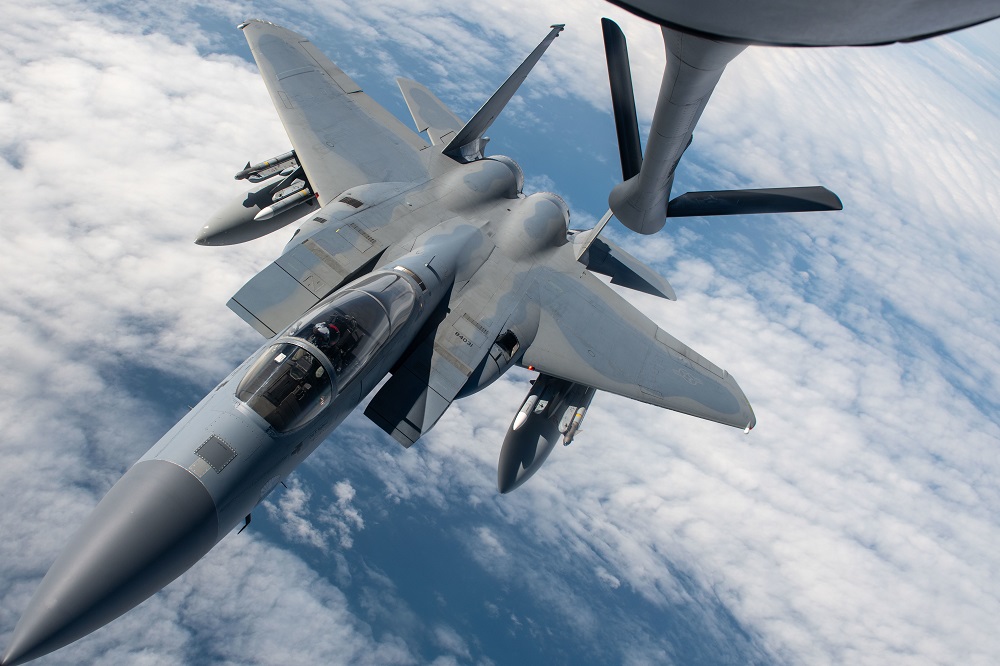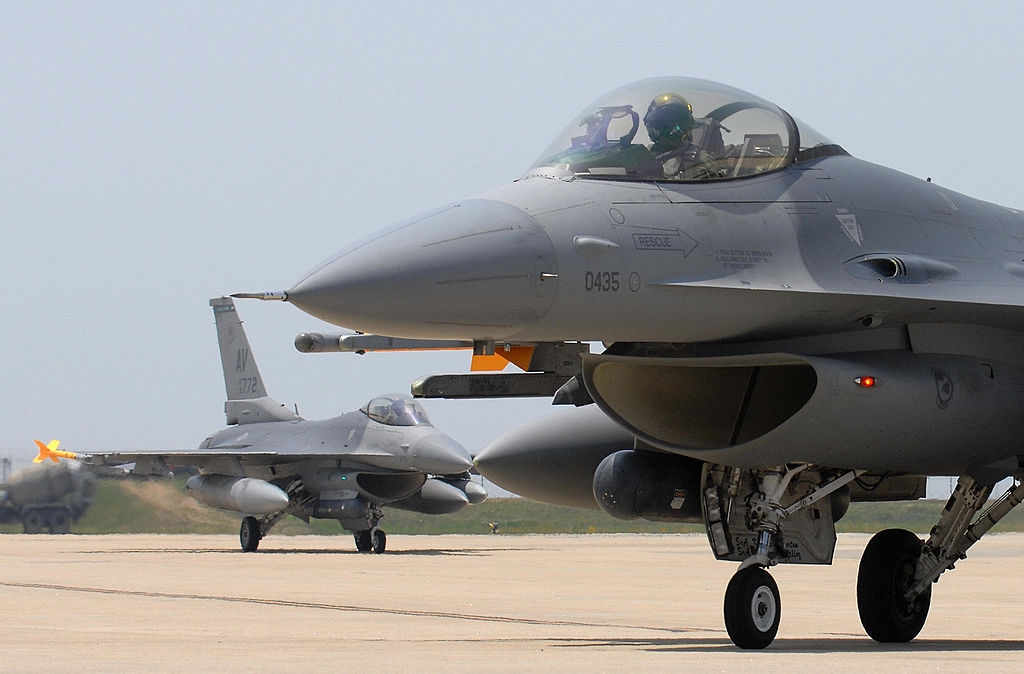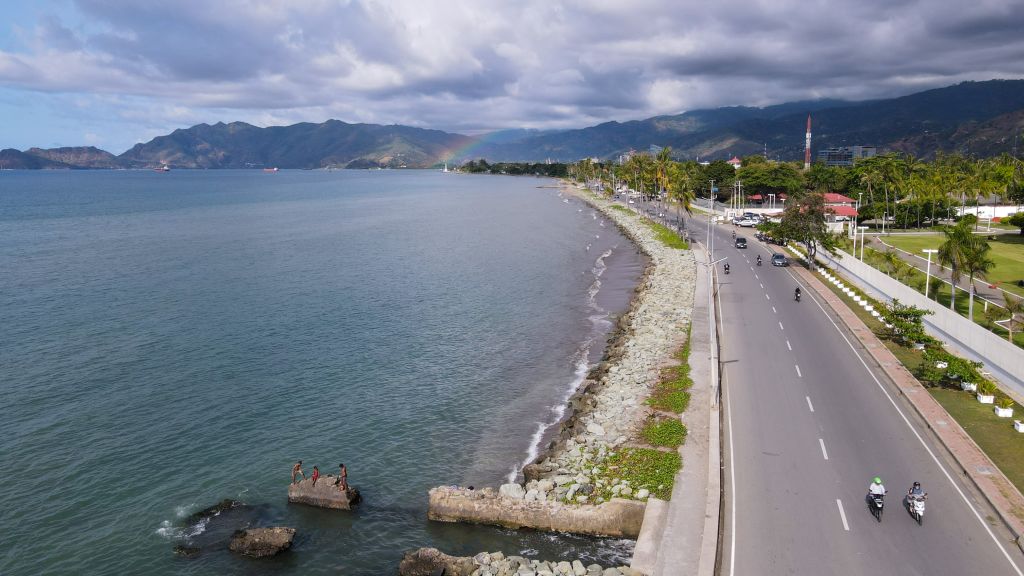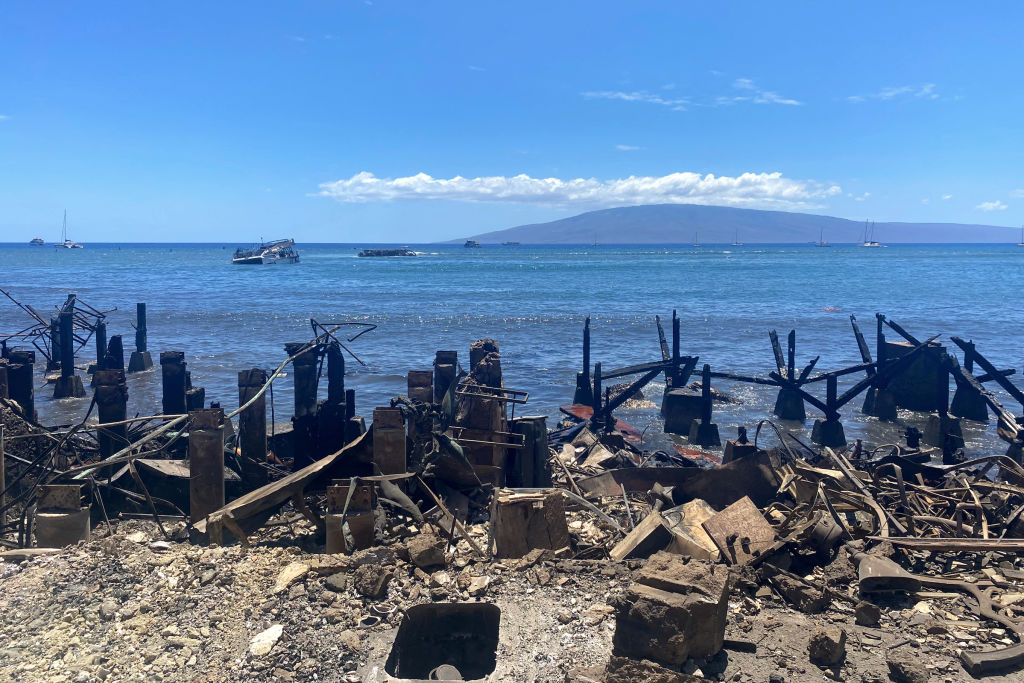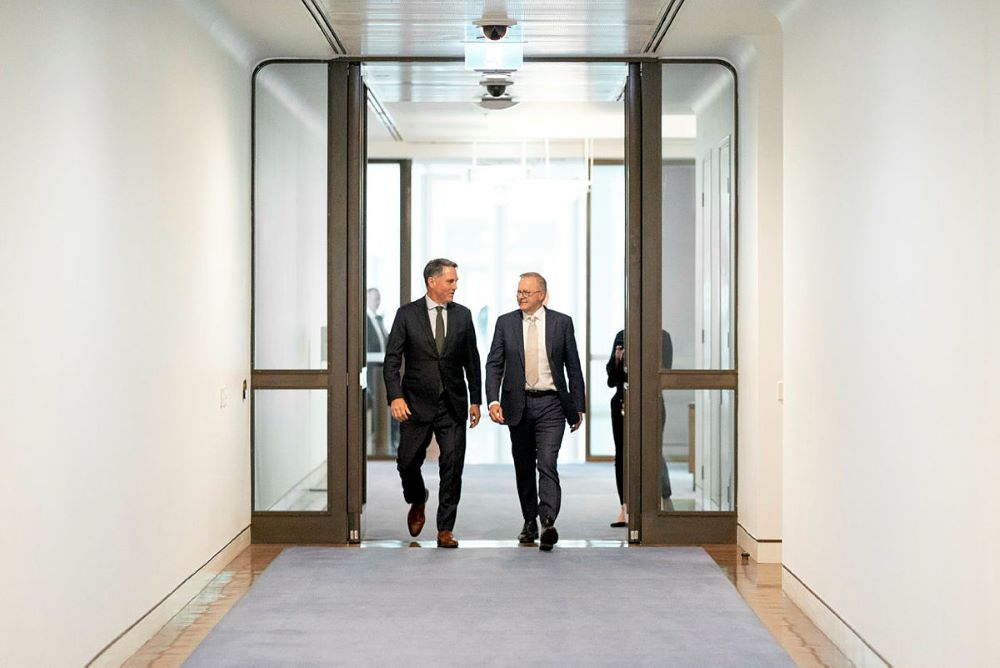
Australia, the United Kingdom and the United States are nearing their third year of the most forward-looking and visionary strategic industrial effort since the 1941 Lend-Lease Act, which empowered the US to lend or lease war supplies to any nation deemed ‘vital to the defense of the United States’. Their joint decision, announced in September 2021, to establish the ‘enhanced trilateral security partnership’ known as AUKUS stemmed from a mutual recognition that China’s military build-up and technological advancement present a clear threat to each country.
The most high-profile element of the collaboration is to build nuclear-powered submarines (the so-called first pillar of the agreement). But the second pillar of AUKUS—cooperation on advanced capabilities including in cyber, artificial intelligence, quantum technologies and additional undersea capabilities—is equally important and will require the three governments to interact in new ways with each other, with industry and with other nations. This week’s NATO summit in Vilnius, Lithuania, to which the leaders of Australia, Japan, South Korea and New Zealand have been invited, would be a perfect opportunity for the AUKUS three to meet and elevate this collaboration to the international stage.
All three countries have assessed that shifts in the global strategic landscape require them to combine resources and capabilities to maintain a military and technological advantage over revisionist powers that seek to remake the world order both in their own image and to the distinct detriment of others. The AUKUS partnership is needed because, for the first time, the three countries face a competitor, China, that is positioned to establish technological dominance—even over long-held American supremacy—and has the clear intent to use it for malign purposes, whether in high-end military technology or the everyday gadgets we use to communicate with one another.
That is why the AUKUS nations and their like-minded partners cannot stand by idly as Beijing carries out the biggest military build-up since the end of World War II, outpacing any other country in the region by a considerable margin. This build-up is aimed at achieving Beijing’s objectives, such as communist rule over Taiwan and operational control over the South and East China Seas, as well as to discourage the US and its allies from confronting China over its increasingly aggressive behaviour.
China’s technological rise should have come as no surprise: Chinese leaders told the world in the ‘Made in China 2025’ plan that their strategic objective was to supplant the US as the global leader in advanced technology, and they set themselves on that path through legal and illegal means, including theft of intellectual property and trade secrets and via technology transfer.
The advanced capabilities element of the AUKUS agreement will be crucial to challenging that trajectory. But meeting that goal will require a series of fundamental shifts in strategy and tactics from the AUKUS partners. The US will need to adjust its export-control policies and laws; Australia and the UK will need to prove they have both the capability and the capacity to pursue such a complex multifaceted endeavour; defence and technology companies in all three nations will need to consider how they can enhance collaboration with one another; and finally, the three partners need to figure out how to expand the security collective to other trusted partners.
Adapting to new strategic realities
The ability of the three nations to effectively pool their military and technological effort depends on their leaders and the bureaucracies they command making practical changes to the ways business is done. That may mean, for instance, adjusting export rules and ensuring that industrial policy is not stymied by regulation. It also will demand some significant mental and cultural shifts.
One such shift is to move away from unqualified globalisation and to embrace instead a more strategic globalisation among friends. Free and fair trade is of course generally a good thing, but unfettered globalisation has enabled revisionist regimes to exploit economic overdependence, including through coercion and by accessing technology from the West that is then used against it. Security and economics, which Western countries treated as separate issues for much of the post–Cold War period, turn out to be inseparable—largely because authoritarian regimes like Chinese leader Xi Jinping’s are weaponising trade and using it to create security vulnerabilities for other countries.
Freer trade also doesn’t necessarily correlate with increased peace and stability. While there is no doubt that economic engagement can have strategic value, it is increasingly clear that economic relationships alone will not prevent conflict between states. Indeed, trade can become a cudgel if one country exploits its trading relationships to coerce other nations into accepting its illegal and disruptive actions. That is what has happened with Russia’s illegal invasion of Ukraine and China’s creation of militarised artificial islands in contested waters of the South China Sea.
AUKUS—and in particular Pillar 2 on advanced capabilities—is first and foremost a technology accelerator agreement that recognises this reality and provides a practical response. Leaders in Beijing have not only made clear their ambition to remake the global order consistent with their authoritarian values, but also demonstrated appreciation for the fact that technological capability will be decisive in determining who prevails in this strategic competition. The US and its allies are facing a competitor that has become more outwardly aggressive and whose size and strength mean that burden-sharing and collaboration are the only ways to remain competitive individually and collectively.
As Australian Deputy Prime Minister and Defence Minister Richard Marles has said, the AUKUS partners need to ‘supplement and strengthen’ their respective industries by ‘pooling resources and combining strengths’ in order to ‘shape our future, reduce our vulnerability to coercion, and help deter conflict’.
This means governments must work with industry and proactively decide in which areas and with whom they will collaborate. The three governments should set clear standards and prioritise collaboration and investment in universities, research institutions, and defence and technology companies that are focused on advancing open societies that respect human rights and territorial sovereignty.
Western defence and technology industries, long accustomed to free-market competition without limits, should be encouraged to think more about cooperation with industries in like-minded countries. That doesn’t mean the end of competition, which drives excellence and efficiency. But competition should be balanced against national industrial resilience, especially in critical technologies. This could entail incentives for companies that choose to partner with companies in like-minded countries even if it means bearing some initial higher costs.
How AUKUS enhances deterrence
The Russian invasion of Ukraine has shocked the world into understanding what is necessary during a time of war. But it is also awakening European and Asian leaders to the necessity of deterrence in the Indo-Pacific and to what must be done during a period of strategic competition in which rivals act below the level of conflict, such as employing economic coercion or other grey-zone activities. In a joint statement earlier this year, NATO Secretary-General Jens Stoltenberg and Japanese Prime Minister Fumio Kishida noted, ‘What is happening in Europe today could happen in East Asia tomorrow. So, we must remain united and firm.’ In addition to preventing economic vulnerabilities, deterrence requires both the development of military capabilities and the political will to act, if necessary, to help put a ceiling on escalating coercion and prevent contests from becoming conflicts.
Following through with AUKUS is crucial as it aims to increase capability, credibility and intent—the triumvirate that makes up deterrence. It will demonstrate to Beijing that the US and its allies are prepared to act in unison and break down barriers to sharing the most advanced military technology to maintain peace in the Indo-Pacific. It is the very act of showing a preparedness to defend and win a war that will help avoid it.
The creation of AUKUS recognises that the world is in the midst of a maritime century, one in which shipping lanes and undersea cables represent the physical and digital lifelines to global prosperity. Maritime stability is essential to international order, and the war in Ukraine has proved just how quickly both can be the targets of revisionist regimes. Whether it is sea cables in the Shetlands or grain ships exiting the Black Sea, disrupting the maritime commons is one way to coerce states. Underwater capabilities like cutting-edge submarines represent a powerful insurance policy to prevent, or mitigate, risks to both.
Changing ways of operating
AUKUS requires creating long-term partnerships—among governments, industry leaders and civil society. These allies are competing against regimes that have long fused their civil and military industries. This doesn’t mean the AUKUS collaboration should do the same. It does mean, however, that each of the three nations must consider what whole-of-government or other dramatic changes may be necessary for the project’s success.
AUKUS has a unique opportunity to use Pillar 2 with clear governance mechanisms to reinvent the security and defence partnership between government and industry. There should be constant engagement between government and industry to foster synergy and innovation and allow the private sector to generate new concepts and ideas for advancing defence capabilities. Since Russia’s invasion of Ukraine, the AUKUS governments have relied on their respective defence departments engaging with industry to identify what missiles, armor, drones and other capabilities are available, what gaps exist, and how production and sourcing can address those weaknesses. This type of engagement is necessary to advance Pillar 2 of AUKUS, and it can be done in a way that doesn’t thwart innovation and competition. AUKUS nations can draw lessons from actions taken in similar technology minilateral forums, such as the Global Combat Air Programme spearheaded by the UK, Japan and Italy.
For the US, unless bureaucratic players are on board to implement such an ambitious initiative, the thicket of US export-control policies, regulations and laws that restrict technology sharing will pose an insurmountable obstacle to getting AUKUS off the ground, especially Pillar 2. To date, there has been considerable bipartisan support within Congress. Only this month, members of the House Foreign Affairs Committee proposed the ‘AUKUS Undersea Defense Act’, which would authorise changes including the transfer of Virginia-class submarines to Australia, US receipt of financial contributions from Australia and the UK for AUKUS-related activities and, importantly, creation of a pathway for exemptions to restrictions on defence- and military-related exports under the International Traffic in Arms Regulations. It would be highly unfortunate if bureaucratic inertia or opposition was allowed to hamstring the leader-level AUKUS initiative and the collective deterrence it will deliver.
Australia has its own major hurdles to overcome in the form of developing the skills and workforce necessary to implement AUKUS. The financial cost of the nuclear-propelled submarines alone for Australia—an investment of between $268 billion and $368 billion by 2055—will undoubtedly raise questions among the Australian public. But such questions have answers. Politicians must make the case that investment in defence and advanced capabilities now will mean a more secure and stable future and prevent even greater financial and human costs down the road. One has only to look at Russia’s illegal war on Ukraine to see the costs (in lives and livelihoods) of a conflict that in part is due to inaction and underspending by the major European powers over decades.
In all three countries, the public and politicians are beginning to focus on the cost-of-living crisis. AUKUS leaders need to be crystal clear that these economic headwinds, including rising food and energy prices, are due in part to Russian President Vladimir Putin’s war, and that defence underinvestment is not the solution to economic crisis. There will be delays and hurdles along the AUKUS pathway, but transparent and consistent messaging will ensure that they don’t result in fissures to the partnership.
If workforce issues, regulatory barriers and cost are all bumps in the road, there’s no doubt that the biggest obstacle to both AUKUS and a stable future is a lack of persistent political will. The blessing and burden of democracy is that future governments cannot be bound by previous policies, so the greatest test will be whether these three great democracies have the long-term will to stay the course. From economic downturns and domestic priorities to Beijing’s propaganda that AUKUS is launching an arms race, there will be test after test, decade after decade, for AUKUS political leaders.
Yet, the reality of a future in which the maritime order continues to underwrite the mechanics of global interdependence is unlikely to change. Such an assumption should inform the long-term commitment to AUKUS. The ‘stabilisation’ of economic relationships with China that all three countries are pursuing, involving political re-engagement and renewed trade, should not be construed as enabling reduced spending on defence and security. It has been the individual and collective strength of the AUKUS partners that has put them in a competitive position with Beijing. This would only be undermined by returning to the failed approach of engagement and trade without due diligence and deterrence.
Opportunities beyond the AUKUS three
Pillar 2 is already a crucial component of the AUKUS pact and was always intended to be so. Technology—from artificial intelligence to cyberspace—is now impacting every corner of society, security and national sovereignty. Those countries that remain competitive and continue to have control of their technological future will also maintain control of their destiny. While the three countries’ respective defence departments now set sail on the decades of work it will take to build the AUKUS-class submarines, rapid development of the advanced capabilities pillar will be required both to remain competitive with Beijing (and to a lesser extent Moscow) and to maintain the social licence to continue investing in defence and security.
Pillar 2 is a powerful reminder that beyond the sensitive nature of nuclear-powered submarines, developing and deploying advanced technology will be an AUKUS-first but not an AUKUS-only endeavour. It will be essential that the trilateral partnership expands its advanced capabilities work to the Quad and other European and Indo-Pacific partners.
First, the leaders of the trilateral partnership should demonstrate the importance of AUKUS by cementing its place on the international agenda. When the three leaders or their defence and foreign ministers are together—for example, at G7 meetings at which Australia is invited, or NATO and United Nations gatherings—AUKUS meetings should occur as a natural component, just as the Quad meets regularly on the sidelines of these international meetings. This week’s NATO summit in Vilnius is a good opportunity for AUKUS leaders to consult.
Second, AUKUS leaders and defence ministers should be clear about their approach to 5G (and 6G) technology. They should issue a joint statement that they are collaborating on 5G to protect their countries and regions from high-risk vendors and make it a call to arms for all like-minded countries. The majority of NATO countries would likely join the effort, which would give confidence to smaller countries that there is a genuine alternative path to Chinese state-owned and state-directed companies for the provision of 5G that is not just secure but affordable.
Third, whether 5G, quantum computing or space technology (currently not a part of AUKUS), there are ways to show that AUKUS Pillar 2 is inclusive for open societies that share similar values and interests. The recent joint statement by US President Joe Biden and Indian Prime Minister Narendra Modi—which committed the two countries to enhancing commercial collaboration in the space sector, addressing export-control issues to facilitate greater technology transfer and establishing a quantum coordination mechanism, among other things—was a game-changing communiqué for supercharging technological cooperation between the two countries. If the US can collaborate with India on these technologies, so too can AUKUS collaborate with other like-minded nations. Doing so would improve trust within those regions that have been sceptical of AUKUS—Southeast Asia and the Pacific, for example—and demonstrate that AUKUS is not just an Anglosphere grouping trying to relive the past.
Restoring peace through deterrence
If the AUKUS nations work together and explain why they are investing so heavily in the initiative, they might just be able to restore the necessary sense of respect and doubt in the minds of rivals to maintain peace through deterrence and enhance their individual and collective sovereignty.
After all, Putin thought he could fire a shot and take what he wanted without great cost, while Xi thinks he can have what he wants without firing a shot. Australia, the UK and the US can work together—through AUKUS and beyond—to prove them both wrong.
